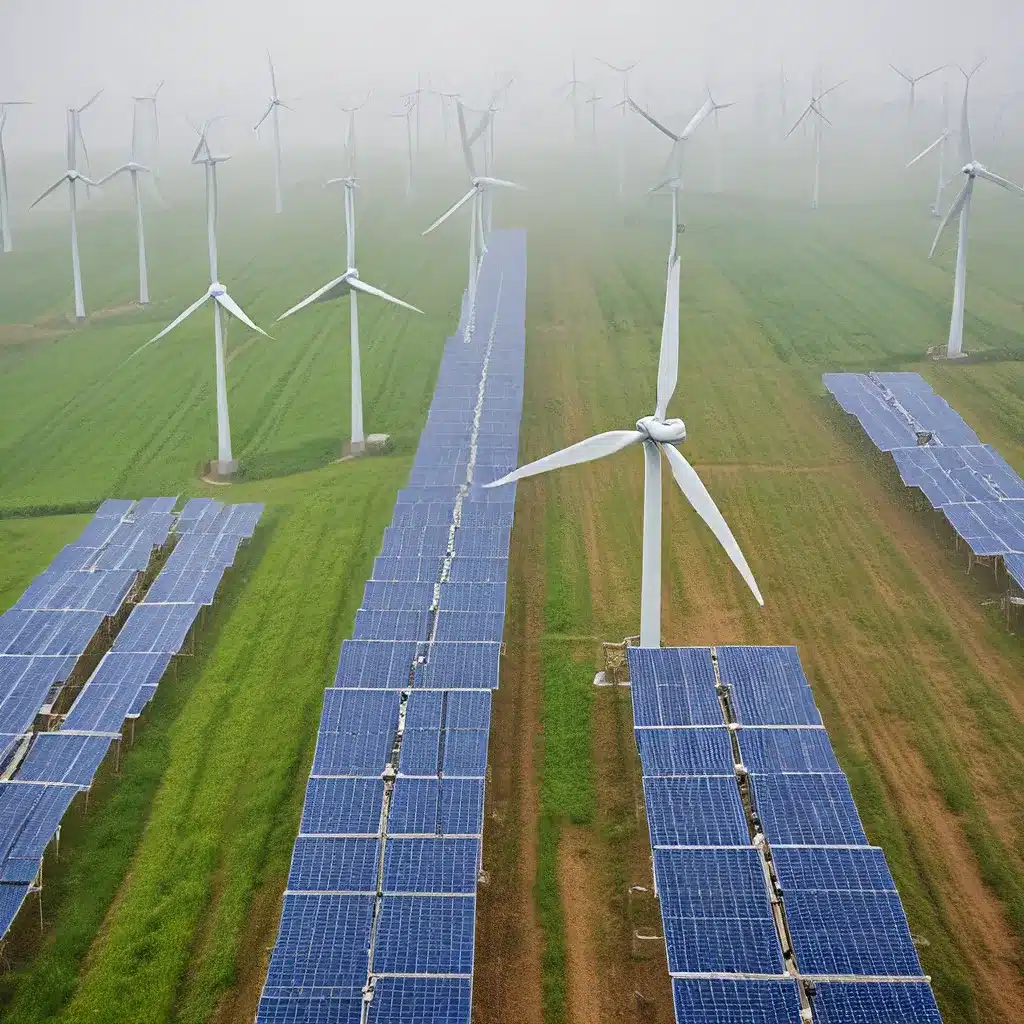
As the world increasingly recognizes the urgent need to transition towards clean, sustainable energy sources, the spotlight has turned to the challenge of financing these crucial renewable energy projects. Traditional financing models often fall short, leaving a gap that innovative financing approaches are stepping in to fill.
Unlocking Private Investment through Innovative Models
One of the key barriers to widespread renewable energy adoption has been the difficulty in attracting private investment. Conventional financing structures can be rigid and ill-suited to the unique characteristics of renewable energy projects. This is where innovative models come into play, providing creative solutions to mobilize the necessary capital.
The Rise of Energy-as-a-Service (EaaS)
Energy-as-a-Service is a novel approach that is gaining traction in the renewable energy space. Instead of customers purchasing and owning the energy infrastructure, the EaaS model provides a comprehensive service where a third-party provider owns, operates, and maintains the renewable energy system. Customers then pay a recurring fee for the energy generated, much like they would for traditional utility services.
This model offers several advantages that make it appealing to both renewable energy providers and end-users. For providers, it reduces the upfront capital investment required, making projects more financially viable. For customers, it eliminates the need for large initial investments, providing access to renewable energy without the hassle of system ownership and maintenance.
By shifting the financial burden and risk away from the customer, EaaS models have the potential to unlock a vast pool of private investment that was previously inaccessible. This can be a game-changer, especially in developing regions where access to capital is a significant obstacle to renewable energy deployment.
Innovative Financial Instruments: Unlocking Small-Scale Projects
Another innovative approach to renewable energy financing involves the use of financial aggregation platforms. These platforms aim to address the challenge of financing small-scale, distributed renewable energy projects, which often struggle to attract investment due to their small size and perceived risk.
One such initiative is the Climate Aggregation Platform (CAP), developed by the United Nations Development Programme (UNDP). The CAP works to lower the financing costs for small-scale, low-carbon energy projects by crowdsourcing innovative financial structures and models. By aggregating these smaller projects, the CAP can create investment opportunities that are more attractive to institutional investors and other sources of capital.
The potential of these financial aggregation platforms is significant, as they can help unlock the vast potential of small-scale renewable energy projects in underserved communities and developing regions. By harnessing the power of innovative financing, these platforms are paving the way for a more inclusive and equitable energy transition.
Public-Private Partnerships: Bridging the Financing Gap
While innovative financing models are crucial, they often work best when combined with strategic public-private partnerships. Governments and development organizations can play a vital role in creating an enabling environment that fosters private investment in renewable energy.
The UNDP, for example, has been actively involved in supporting the design and implementation of innovative financial instruments, such as payment guarantees, receivable financing, and performance-based financing. These instruments help to mitigate the perceived risks associated with renewable energy projects, making them more attractive to private investors.
By working closely with governments and the private sector, the UNDP aims to mobilize private green finance and support countries in achieving their climate and development goals. This collaborative approach recognizes the importance of aligning public policies, regulations, and financial incentives to create a conducive environment for renewable energy investment.
The Potential of Impact Investing and Blended Finance
Another innovative financing approach gaining traction is impact investing. This strategy involves investing in projects or companies that not only generate financial returns but also create positive social and environmental impacts. In the renewable energy sector, impact investors are increasingly drawn to projects that can demonstrate tangible benefits, such as improved access to clean energy, reduced greenhouse gas emissions, and job creation.
Closely related to impact investing is the concept of blended finance, which involves the strategic use of public or philanthropic funds to catalyze private investment. By leveraging public resources to de-risk or enhance the attractiveness of renewable energy projects, blended finance can help to mobilize larger volumes of private capital that might not have been accessible otherwise.
The UNDP has been actively exploring the potential of blended finance to support the widespread adoption of sustainable energy solutions, particularly in developing countries. By combining public and private resources, this approach can help to overcome the barriers that have historically hindered renewable energy deployment in underserved communities.
The Evolving Landscape of Renewable Energy Financing
As the world continues to grapple with the urgent need for a clean energy transition, the landscape of renewable energy financing is rapidly evolving. Innovative models, strategic partnerships, and impact-driven investment approaches are all playing a crucial role in unlocking the necessary capital to drive this transformation.
While the challenges remain significant, the potential of these innovative financing solutions is undeniable. By harnessing the power of collaboration, technology, and creative thinking, we can unlock the full potential of renewable energy and build a more sustainable, equitable, and resilient future.
As I continue to explore this dynamic and rapidly changing field, I’m excited to see how new ideas, technologies, and partnerships will shape the future of renewable energy financing. It’s a journey full of promise, and I’m eager to be a part of it. If you’re interested in learning more about how our company can support your renewable energy projects, I’d be happy to discuss the options further.

